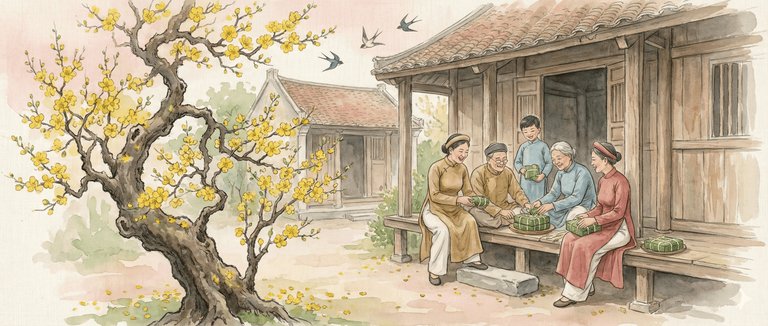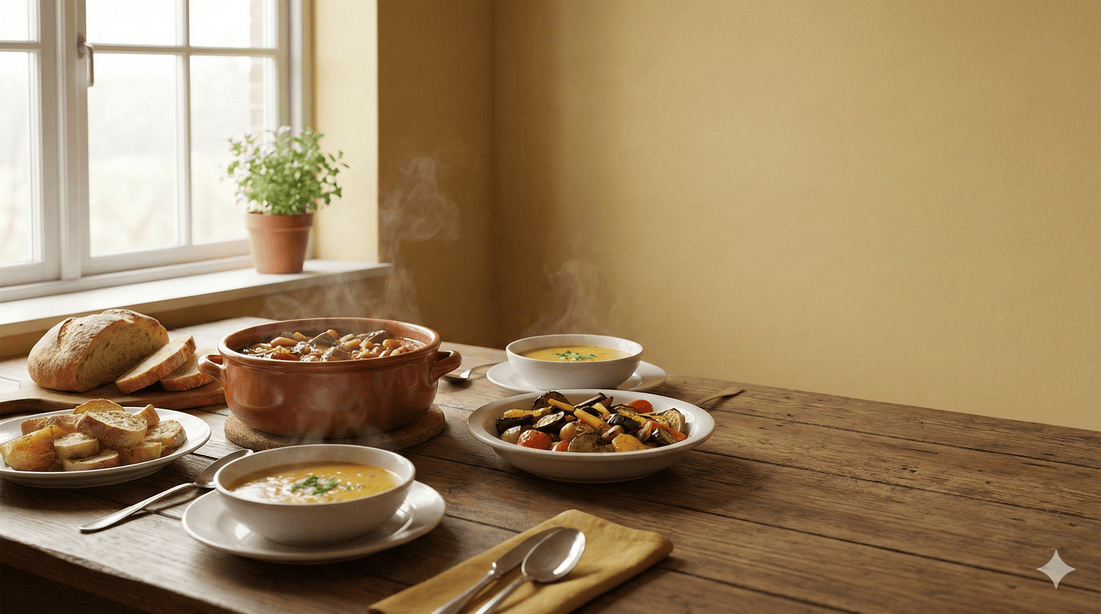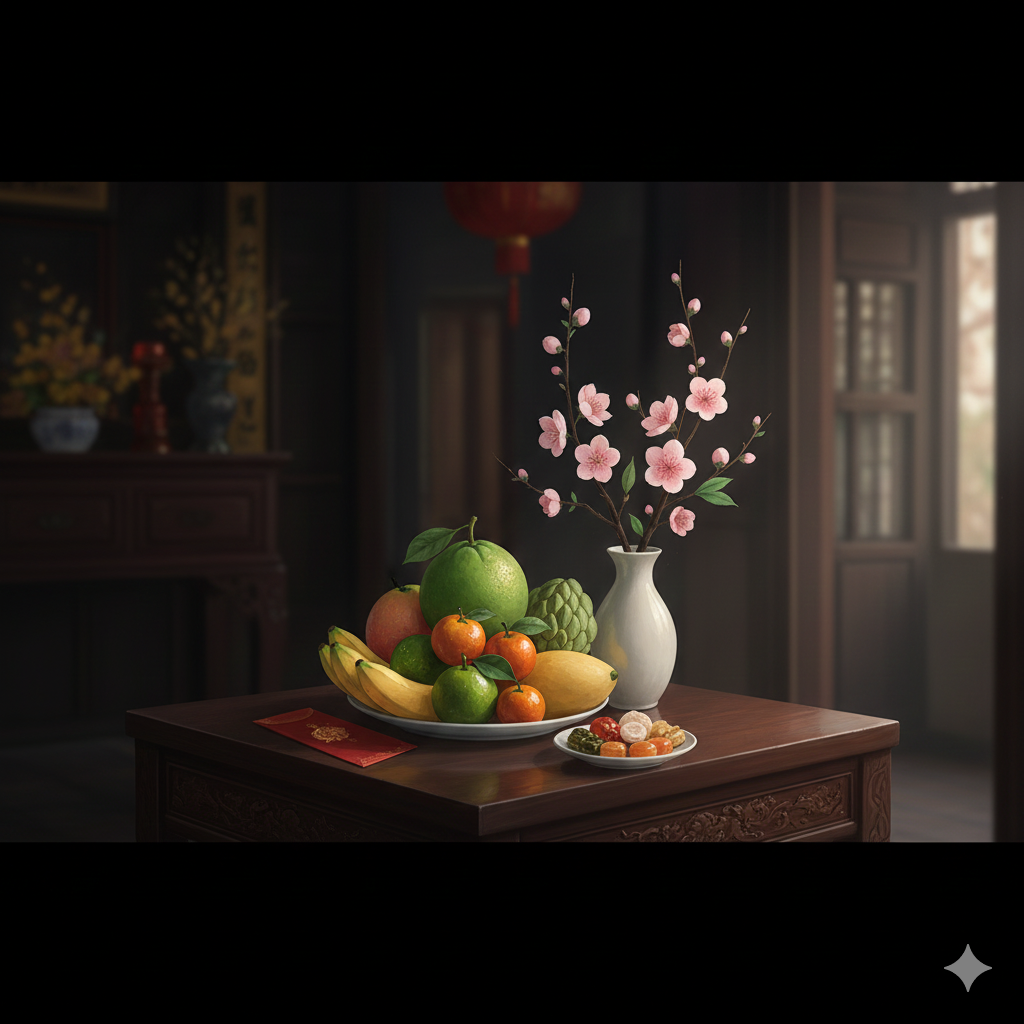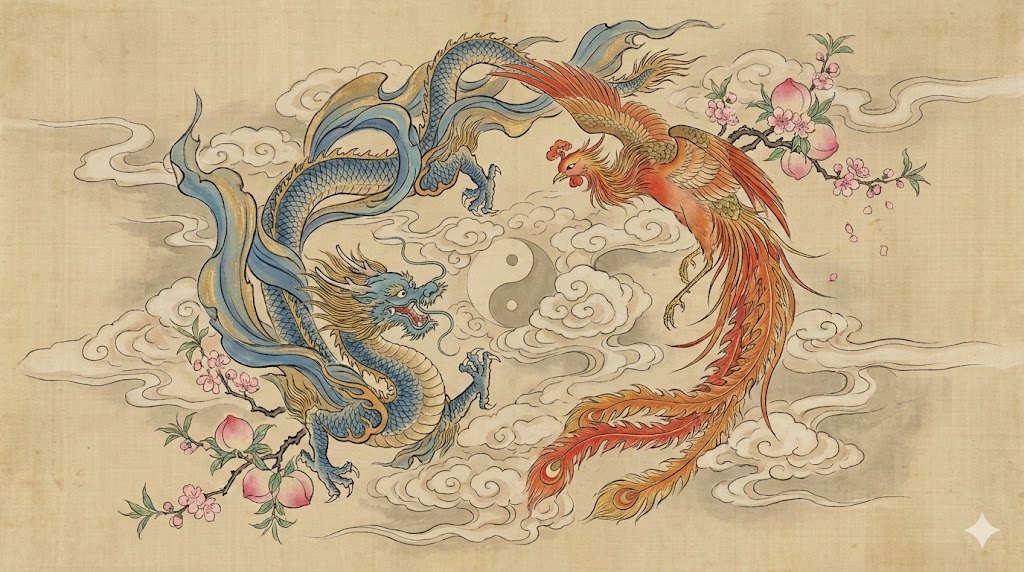
Phật Giáo - Thiên Thứ Ba
Khám phá ảnh hưởng của Phật giáo trong văn hóa Việt Nam: triết lý, nghi lễ và vai trò trong đời sống tâm linh truyền thống.
Nơi chia sẻ kiến thức và trải nghiệm về văn hóa, phong tục, ẩm thực và du lịch Việt Nam

Khám phá ảnh hưởng của Phật giáo trong văn hóa Việt Nam: triết lý, nghi lễ và vai trò trong đời sống tâm linh truyền thống.

Khám phá ảnh hưởng của Nho giáo trong văn hóa Việt Nam: triết lý, luân lý và vai trò trong xã hội truyền thống.

Tìm hiểu về tín ngưỡng phù thủy trong xã hội Việt Nam: các nghi lễ, phép thuật và quan điểm phê phán về hiện tượng này.

Tìm hiểu về phong tục khoán ước trong làng xã Việt Nam: hệ thống luật lệ tự quản và quy định cộng đồng.

Tìm hiểu về phong tục nghĩa sương trong làng xã Việt Nam: hệ thống dự trữ lương thực và cứu trợ cộng đồng.

Tìm hiểu về phong tục xem ngày kén giờ trong văn hóa Việt Nam: cách xem lịch, chọn ngày tốt và các kiêng kỵ trong làm việc.

Hà Giang là điểm đến lý tưởng với cảnh quan hùng vĩ, ruộng bậc thang đẹp mắt và văn hóa bản địa độc đáo. Cẩm nang du lịch chi tiết với thông tin di chuyển, lưu trú, điểm tham quan, ẩm thực và lưu ý khi du lịch Hà Giang.

Mai Châu là một trong những điểm du lịch nổi tiếng nhất tỉnh Hòa Bình với cảnh sắc thiên nhiên tuyệt đẹp và văn hóa bản địa độc đáo. Cẩm nang du lịch chi tiết với thông tin di chuyển, lưu trú, điểm tham quan, ẩm thực và lưu ý khi du lịch Mai Châu.

Sapa là một trong những điểm du lịch nổi tiếng nhất Việt Nam với ruộng bậc thang, núi non hùng vĩ và văn hóa bản địa độc đáo. Cẩm nang du lịch chi tiết với thông tin di chuyển, lưu trú, điểm tham quan, ẩm thực và lưu ý khi du lịch Sapa.

Vịnh Hạ Long rộng hơn 1.500 km2, với hơn 2.000 hòn đảo lớn nhỏ tạo nên khung cảnh kỳ vĩ. Cẩm nang du lịch chi tiết với thông tin di chuyển, lưu trú, điểm tham quan, ẩm thực và lưu ý khi du lịch Vịnh Hạ Long.

Độc giả có thể tra cứu online thông tin về các vị dược liệu qua danh sách dưới đây.

Bộ sưu tập toàn diện về phong tục Việt Nam qua ba thiên: Gia tộc, Hương đảng và Xã hội, phản ánh bản sắc văn hóa dân tộc qua hàng ngàn năm lịch sử.

Dinh Độc Lập (Dinh Thống Nhất) là biểu tượng lịch sử quan trọng của Việt Nam, nơi ghi dấu nhiều sự kiện trọng đại trong lịch sử dân tộc. Hướng dẫn chi tiết tham quan với đầy đủ thông tin giờ mở cửa, giá vé, điểm tham quan và vị trí bản đồ.

Hành trình 48 giờ khám phá Cù Lao Chàm, cụm đảo được bảo tồn tốt với bãi biển đẹp, hệ sinh thái phong phú và trải nghiệm sống chậm giữa thiên nhiên hoang sơ.

Cù Lao Chàm là cụm 8 đảo thuộc Hội An, Quảng Nam, nổi tiếng với hệ sinh thái phong phú và cảnh quan hoang sơ. Cẩm nang du lịch chi tiết với thông tin di chuyển, lưu trú, điểm tham quan, ẩm thực và lưu ý khi du lịch Cù Lao Chàm.

Đồng Văn là một trong những điểm du lịch nổi tiếng nhất tỉnh Hà Giang với cảnh sắc thiên nhiên tuyệt đẹp và văn hóa bản địa độc đáo. Cẩm nang du lịch chi tiết với thông tin di chuyển, lưu trú, điểm tham quan, ẩm thực và lưu ý khi du lịch Đồng Văn.

Hà Giang là điểm đến lý tưởng với cảnh quan hùng vĩ, ruộng bậc thang đẹp mắt và văn hóa bản địa độc đáo. Cẩm nang du lịch chi tiết với thông tin di chuyển, lưu trú, điểm tham quan, ẩm thực và lưu ý khi du lịch Hà Giang.

Mai Châu là một trong những điểm du lịch nổi tiếng nhất tỉnh Hòa Bình với cảnh sắc thiên nhiên tuyệt đẹp và văn hóa bản địa độc đáo. Cẩm nang du lịch chi tiết với thông tin di chuyển, lưu trú, điểm tham quan, ẩm thực và lưu ý khi du lịch Mai Châu.

Măng Đen là một thị trấn nhỏ trên cao nguyên Kon Tum, được mệnh danh là 'Đà Lạt thu nhỏ' với rừng nguyên sinh, hồ, thác nước, rừng thông và khí hậu mát mẻ. Cẩm nang du lịch chi tiết với thông tin di chuyển, lưu trú, điểm tham quan, ẩm thực và lưu ý khi du lịch Măng Đen.

Mèo Vạc là một trong những điểm du lịch nổi tiếng nhất ở vùng cao nguyên đá Hà Giang với cảnh sắc hùng vĩ và văn hóa bản địa độc đáo. Cẩm nang du lịch chi tiết với thông tin di chuyển, lưu trú, điểm tham quan, ẩm thực và lưu ý khi du lịch Mèo Vạc.

Món bánh canh bột xắt cá lóc thơm ngon, với sợi bánh canh dai mềm, nước dùng ngọt thanh từ xương gà và cá lóc tươi ngon, là món ăn đặc sản của miền Trung Việt Nam.

Món bánh chuối hấp thơm ngon, mềm mịn với nguyên liệu đơn giản, phù hợp cho người ăn chay và yêu thích món tráng miệng thanh mát.

Món bánh xèo chay thơm ngon, giòn rụm với nhân nấm và đậu hũ, phù hợp cho người ăn chay và yêu thích ẩm thực thanh đạm.

Món bánh xèo mực đặc sản của Phú Yên với nhân mực tươi ngon, vỏ bánh giòn rụm và hương vị biển cả đậm đà.

Món bánh xèo nhân tôm củ sắn truyền thống của miền Trung Việt Nam, với vỏ bánh giòn rụm và nhân tôm thịt đậm đà.

Món bao tử hầm tiêu xanh thơm nồng, bao tử mềm mại thấm đẫm gia vị cay nồng của tiêu xanh đặc trưng.

Món bò kho Nam Bộ thơm ngon, với thịt bò mềm ngọt và nước kho sánh đậm đà, là lựa chọn tuyệt vời cho bữa cơm gia đình.

Món bún bò Huế đặc trưng với nước dùng đậm đà, cay nồng, là biểu tượng ẩm thực của cố đô Huế.

Danh mục Dược Liệu cung cấp danh sách các loại cây thuốc dược liệu, nấm dược liệu, thảo dược… phổ biến. Kiến thức Central Pharmacy biên soạn dựa vào các sách dược liệu, giáo trình dược liệu uy tín, giúp bạn đọc nhận thức các vị dược liệu và cách dùng dễ hiểu nhất.

Độc giả có thể tra cứu online thông tin về các vị dược liệu qua danh sách dưới đây.

Ích mẫu nam thuộc dạng cây thảo, mọc đứng, chiều cao mỗi cây khoảng từ 0,6 đến 1,2 mét, cây có phủ một lớp lông mềm mịn. Thân cây ít khi phân nhánh, có 4 góc, cạnh lồi. Lá cây mọc đối hay mọc vòng.

Ếch được biết là một loài động vật được sử dụng làm phương thuốc chữa nhiễm trùng, vết cắn, ung thư, rối loạn tim, xuất huyết, dị ứng, viêm, đau và thậm chí AIDS.

Ích mẫu được biết đến khá phổ biến với công dụng điều trị kinh nguyệt bế tắc, máu ứ tích tụ sau khi sinh đẻ, Đau Bụng Kinh hoặc kinh ra quá nhiều, phù thũng, giảm đau và làm dễ đẻ.

Với công dụng hiệu quả trong hỗ trợ điều trị đau nhức xương khớp, viêm gan, Ưng bất bạc được rất nhiều người sử dụng mỗi ngày.

Uy linh tiên được biết đến khá phổ biến với công dụng lợi sữa, thông tiểu tiện và giúp cải thiện tiêu hoá. Trong bài viết này, Trung Tâm Thuốc Central Pharmacy xin gửi đến bạn đọc những thông tin chi tiết về Uy linh tiên.

Ích trí được sử dụng rộng rãi bởi công dụng trị đái dầm, di mộng tinh, bổ dạ dày. Vậy, vị thuốc này có tác dụng gì? Và sử dụng Ích trí thế nào mang lại hiệu quả tối ưu nhất?

Văn khấn gia tiên vào ngày Rằm hàng tháng để thể hiện lòng hiếu thảo, tưởng nhớ đến công ơn của ông bà, tổ tiên và cầu mong sự phù hộ.

Văn khấn hóa vàng vào ngày Rằm hàng tháng để gửi đến các vị thần linh và gia tiên, thể hiện sự trọn vẹn của lễ cúng.

Văn khấn Ông Táo (Táo Quân) vào ngày Rằm hàng tháng để cầu mong bếp lửa gia đình luôn ấm cúng, no đủ, gia đạo yên vui.

Tổng hợp các bài văn khấn rằm tháng 7 chuẩn xác theo truyền thống, hướng dẫn chi tiết cách cúng cô hồn và gia tiên đúng nghi lễ.

Văn khấn các vị Thần linh cai quản trong khu vực vào ngày rằm hàng tháng để cầu mong sự che chở, bảo vệ cho gia đình và cộng đồng.

Tổng hợp các bài văn khấn Tết Đoan Ngọ (mùng 5 tháng 5 Âm lịch) chuẩn nhất để cầu mong sức khỏe, bình an, mùa màng bội thu.

Văn khấn Thần Tài, Thổ Địa vào ngày rằm hàng tháng để cầu mong một tháng mới nhiều may mắn, tài lộc và bình an cho gia đình.

Tổng hợp đầy đủ các mẫu văn khấn Thần Tài chuẩn cho từng dịp cụ thể, kèm theo hướng dẫn chi tiết về cách thức thực hiện nghi lễ.

Khám phá tính cách đặc trưng của 12 cung hoàng đạo (chòm sao) và những đặc điểm nổi bật của từng cung trong năm. Hiểu rõ hơn về Bạch Dương, Kim Ngưu, Song Tử, Cự Giải, Sư Tử, Xử Nữ, Thiên Bình, Bọ Cạp, Nhân Mã, Ma Kết, Bảo Bình và Song Ngư.

Tìm hiểu về 12 cung hoàng đạo, ý nghĩa, tính cách và bảng xếp hạng các cung hoàng đạo theo nhiều tiêu chí như chảnh, thân thiện, chăm chỉ, may mắn, chung thủy trong tình yêu và nhiều hơn thế.

Khám phá ý nghĩa phong thủy của bông tai hồ ly - biểu tượng của tình duyên, sắc đẹp và sự quyến rũ giúp tăng cường vận mệnh đào hoa cho phụ nữ.

Hướng dẫn cách đeo nhẫn tỳ hưu đúng chuẩn phong thủy để thu hút tài lộc, bảo vệ bản thân và phát huy tối đa công năng của linh vật.

Khám phá nguồn gốc và truyền thuyết về Tỳ Hưu - linh vật phong thủy mang lại tài lộc và bảo vệ chủ nhân khỏi tà khí.

Dự đoán vận mệnh tài lộc của 5 con giáp may mắn nhất trong năm Bính Ngọ 2026: Mùi, Tý, Dần, Tuất và Thân sẽ có cơ hội đổi đời với tài lộc dồi dào.

Tìm hiểu về ngũ hành tương sinh tương khắc trong văn hóa Á Đông, bao gồm khái niệm, nguyên lý và ứng dụng trong phong thủy, sức khỏe và kinh doanh.

Dự đoán tài vận giúp bạn chủ động xây dựng kế hoạch tài chính hiệu quả. Bài viết giải mã chi tiết các yếu tố ảnh hưởng từ đặc điểm chung của từng con giáp đến lưu ý tận dụng cơ hội nâng cao tài vận trong năm Bính Ngọ 2026.